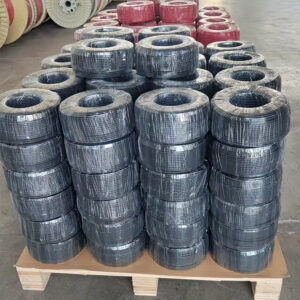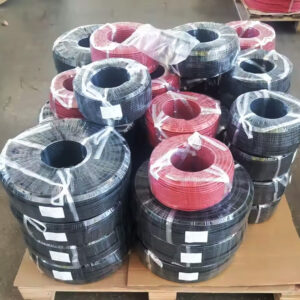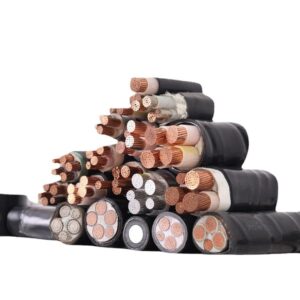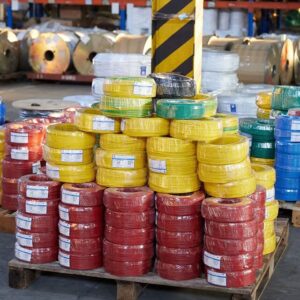Solar cable is specifically engineered for photovoltaic (PV) systems, but how does it differ from standard electrical cables? While they may look similar, solar cables have unique properties that make them essential for safe and efficient solar energy transmission. Using the wrong cable can lead to power losses, safety hazards, and even system failure.
In this article, we’ll compare solar cables and normal cables, explaining why they’re not interchangeable and how to choose the right one for your PV installation.
1. Material Composition: Built for Harsh Conditions
Solar Cable
✔ Tinned Copper Conductors – Prevents oxidation, ensuring long-term conductivity.
✔ UV-Resistant Insulation – Typically XLPE (cross-linked polyethylene) or LSZH (low-smoke zero-halogen) to withstand sunlight.
✔ Double Insulation (H1Z2Z2-K Type) – Extra protection against abrasion and weather.
Normal Cable (e.g., THHN, PVC)
✔ Bare Copper Conductors – More prone to corrosion in outdoor environments.
✔ Basic PVC Insulation – Degrades under UV exposure.
✔ Single-Layer Jacket – Less durable in harsh conditions.
Key Difference: Solar cables use weatherproof materials, while normal cables are designed for indoor or protected use.
2. Voltage & Current Handling
Solar Cable
✔ Rated for DC Current – Optimized for photovoltaic systems (600V–1500V DC).
✔ Lower Power Loss – Minimizes resistance for better energy efficiency.
Normal Cable
✔ Designed for AC Current – Standard 600V AC rating (not ideal for DC solar applications).
✔ Higher Resistance – Can lead to energy waste in PV systems.
Why It Matters: Using AC-rated cables in solar setups increases voltage drop and overheating risks.
3. Temperature & Environmental Resistance
Solar Cable
✔ Wider Temperature Range (–40°C to +90°C, up to +120°C short-term).
✔ Resists Moisture, Ozone & Chemicals – Essential for rooftop and ground-mounted PV systems.
Normal Cable
✔ Limited Weather Resistance – PVC cracks under UV exposure.
✔ Lower Heat Tolerance – Typically rated for –20°C to +60°C.
Real-World Impact: Normal cables fail faster outdoors, requiring frequent replacements.
4. Safety Certifications (TUV, UL, IEC)
Solar Cable
✔ TUV Rheinland (IEC 62930 / EN 50618) – Mandatory for PV applications.
✔ Flame Retardant – LSZH insulation reduces toxic smoke in fires.
Normal Cable
✔ General Certifications (UL, CE) – Not designed for solar-specific hazards like DC arcing.
Compliance Note: Many countries require TUV-certified solar cables for grid-tied systems.
5. Cost Comparison: Is Solar Cable More Expensive?
| Factor | Solar Cable | Normal Cable |
|---|---|---|
| Upfront Cost | Higher (20–30% more) | Lower |
| Lifespan | 25+ years | 5–10 years (outdoors) |
| Efficiency | Optimized for PV = lower energy loss | Higher resistance = wasted power |
| Maintenance | Minimal replacements | Frequent repairs needed |
Verdict: Solar cables save money long-term by avoiding downtime and replacements.
When Can You Use Normal Cable for Solar?
In rare cases, temporary setups might use THHN in conduit, but:
❌ Not UV-resistant – Fails quickly in sunlight.
❌ Not DC-Optimized – Higher fire risk due to arcing.
Expert Tip: Always use PV-rated cables for permanent solar installations.
Conclusion: Solar Cables Are a Must for PV Systems
While normal cables work for general wiring, solar cables are engineered to handle:
✅ Harsh outdoor conditions
✅ High DC voltages
✅ Long-term durability
Using the wrong cable risks safety hazards, efficiency losses, and non-compliance with solar regulations.
Need TUV-Certified Solar Cables? Contact Us for Specifications







